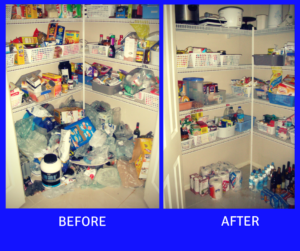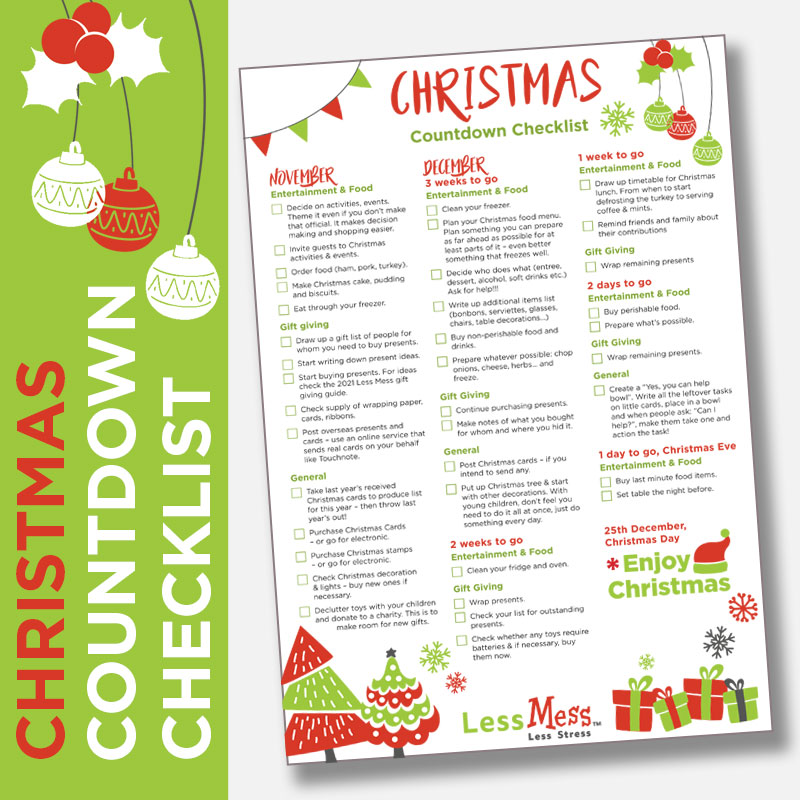With pantry moths about to arrive for their season in autumn, it might be a good time to prevent them from entering your pantry. Here is a few helpful tips to declutter and moth-proof your pantry.
Planning and commitment make for a successful pantry declutter. As with everything about organising your home, ensure you are committed to the cause and plan ahead how you are going to tackle “Project Pantry”:
- pick a time, maybe even block it out in your calendar
- be realistic about how much time it will take
- don’t be afraid of splitting a large pantry project into a few smaller projects. There is no rule that you have to do the whole cupboard/room in one go. How about doing one shelf every day?
Get to work: One step at a time
- approach the pantry shelf by shelf
- take everything off the shelf and lay it out on a horizontal surface – that could be the dining room or the kitchen floor (use a clean towel to cover your floor)
- now make a decision about every single item, ask yourself: do I need it, is it useful?
- If something doesn’t tick either of those options – away it goes.
Why decluttering your pantry is easier than you think
Pantries are reasonably easy to declutter compared to other home areas because we get pointers:
- use-by-dates are a good way to realise something hasn’t been used for a long time or is indeed out of date.
- there are very few or no sentimental items lurking in a pantry, which means you don’t have to make any emotionally driven decisions (like in most other areas of the house)

Organising your pantry means finding a place for everything
Everything coming out of your pantry can be placed in one of four categories – the same ones I use all over the house (except for paperwork)
- Keep – in this area
- Rubbish
- Give away
- Somewhere else – in the house
If you are a current customer or have been to one of my workshops, you will be familiar with these categories – and will know about my love for the last one:
Somewhere else – in the house
This is to keep you focused, in your mind and in the location. Instead of trying to find a spot for all the bits and bobs that might be coming out of your pantry: the leftover candles, the pens, the soccer trophies – all placed here without thinking too much – shoving is the word I like to use – you place them in a container and keep going. Instead of leaving the room and maybe starting to think about organising other areas in your home, all the odd bits get placed in that last category and you can keep working on the pantry, the task you set out to do!
That should be the de-cluttering done!
(A note about rubbish and giveaway: I am a big fan of avoiding unnecessary waste. Here are some tips. Does your neighbour or the local school or community have garden chooks? They might love to take your out-of-date grains, rice, sultanas etc. Community food pantries or collections for families in need accept your excess (but not out-of-date) of tins, rice, soups etc ).
Organising your pantry in a smart way!
When organising everything back into the pantry, be very realistic with your approach.
- Do you love Tupperware/plastic containers, but always have it in your storage drawer rather than used in fridge, freezer and pantry?
- Do you search Pinterest for food storage ideas but secretly know this is just procrastination from actually doing the task?
The amount of time I find way more empty containers than groceries in pantries is astounding. If you didn’t decant your flours into matching, labelled containers in the past – chances are, you are not going to do it in the future. Learn to see the difference between ‘wanting’ and ‘doing’
One thing that IS important though is to avoid the dreaded pantry moth infestation. Ensure that there are no open packets, no open boxes or opened flour bags, even crumbs in the kids’ snack box are enough to attract these beasts. Make use of your containers and stick on labels if you need.
Group things in a way that is logical to YOU
Instead of wanting fancy labels and a beautiful looking pantry, I suggest being realistic and settle for an easier solution.
Maybe having all carbs on one shelf is good enough? Maybe just labelling the shelf will give you and your family enough structure to keep it up? Or maybe you will group all packs/tins/sachets in an open container. Grouping LIKE with LIKE will make it easier to keep on top of your food supplies before it is all mixed up again after a few days.
You are the judge of this – but my advice after seeing many a pantry as a Professional Organiser: better to have things done now than done perfectly.




